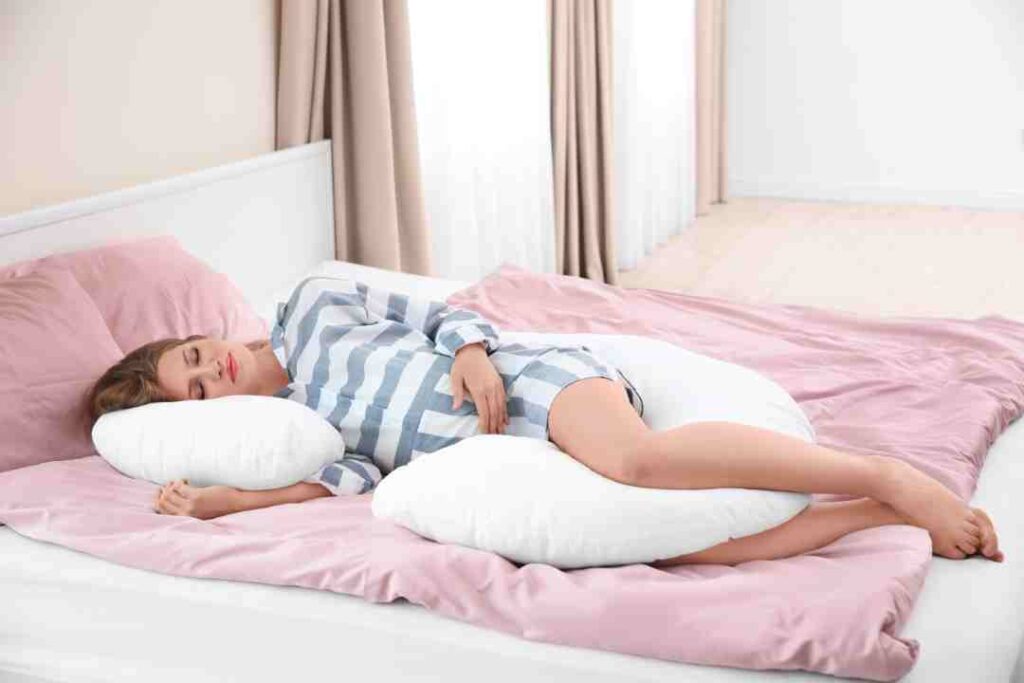Sleep apnea is a common sleep disorder that affects millions of people worldwide. It is characterized by pauses in breathing during sleep, which can lead to various health issues if left untreated. Fortunately, advancements in technology have revolutionized the way we monitor and manage sleep apnea. One such innovation is the ResMed AirSense 10, a state-of-the-art device that not only detects sleep apnea but also provides valuable insights into the progress of the condition.
Understanding Sleep Apnea
Sleep apnea is a sleep disorder characterized by repeated interruptions in breathing during sleep. These interruptions, known as apneas, occur when the airway becomes blocked or collapses, leading to reduced airflow to the lungs. There are three main types of sleep apnea: obstructive sleep apnea, central sleep apnea, and complex sleep apnea syndrome. Each type has its unique characteristics, but they all share the common feature of interrupted breathing during sleep.
Obstructive sleep apnea is the most common type and occurs when the muscles in the back of the throat fail to keep the airway open. This can be caused by factors such as obesity, enlarged tonsils, or a small jaw. Central sleep apnea, on the other hand, is less common and happens when the brain fails to send the proper signals to the muscles that control breathing. Complex sleep apnea syndrome is a combination of both obstructive and central sleep apnea.
While sleep apnea may seem like a mere inconvenience, it can have a significant impact on a person’s health and well-being. Repeated interruptions in breathing can lead to poor sleep quality, resulting in daytime drowsiness and fatigue. This can affect a person’s ability to concentrate, perform daily tasks, and even increase the risk of accidents, especially while driving or operating heavy machinery.
Moreover, untreated sleep apnea has been linked to various health conditions. One of the most significant risks is the development of high blood pressure. The frequent interruptions in breathing cause the release of stress hormones, which can raise blood pressure levels. Over time, this can lead to hypertension, increasing the risk of heart disease and stroke.
In addition to cardiovascular problems, sleep apnea has also been associated with an increased risk of developing type 2 diabetes. The disrupted sleep patterns can affect the body’s ability to regulate blood sugar levels, leading to insulin resistance and the development of diabetes. Furthermore, sleep apnea has been shown to contribute to weight gain and obesity, which are also risk factors for diabetes.

Managing sleep apnea is crucial to prevent these potential complications. Treatment options may include lifestyle changes, such as weight loss and regular exercise, to reduce the severity of symptoms. Continuous positive airway pressure (CPAP) therapy is a common treatment method that involves wearing a mask over the nose or mouth during sleep. This mask delivers a steady flow of air pressure, keeping the airway open and preventing apneas.
In some cases, surgery may be necessary to correct structural issues that contribute to sleep apnea. This can involve removing excess tissue, repositioning the jaw, or even enlarging the airway. However, surgery is typically considered a last resort when other treatment options have been unsuccessful.
Overall, understanding sleep apnea and its potential impact on health is essential for individuals who suspect they may have the condition. Seeking medical advice and undergoing a sleep study can help diagnose sleep apnea and determine the most appropriate treatment plan. With proper management, individuals with sleep apnea can improve their quality of life and reduce the risk of associated health problems.
Introduction to ResMed AirSense 10
The ResMed AirSense 10 is a cutting-edge device designed to monitor sleep apnea and improve the quality of sleep. Sleep apnea is a common sleep disorder characterized by pauses in breathing or shallow breaths during sleep. These pauses can last from a few seconds to minutes and can occur multiple times throughout the night, disrupting the normal sleep cycle. The AirSense 10 aims to address this issue by providing advanced features and functionalities.
Features of ResMed AirSense 10
One notable feature of the ResMed AirSense 10 is its integrated humidifier. This feature ensures optimal comfort throughout the night by adding moisture to the air that is delivered through the mask. The humidifier can be adjusted according to individual preferences, allowing users to find the perfect level of humidity for a restful sleep.
In addition to the integrated humidifier, the AirSense 10 also boasts an intuitive user interface. The device is equipped with a user-friendly screen that displays relevant information and allows for easy navigation. Users can easily customize settings according to their individual needs, such as adjusting the pressure levels or selecting different therapy modes.
Another notable feature of the AirSense 10 is its advanced data tracking capabilities. The device records various sleep parameters, including respiratory event markers such as apneas and hypopneas. This data is then transmitted to the device for analysis and interpretation. Sleep apnea patients and healthcare providers can use this data to gain valuable insights into the progress of the condition and make informed decisions regarding treatment strategies.
How ResMed AirSense 10 Works
The ResMed AirSense 10 operates by monitoring various sleep parameters to detect and manage sleep apnea. The device consists of a small device that is worn on the wrist or chest, which detects respiratory event markers. These markers include apneas, which are complete pauses in breathing, and hypopneas, which are shallow or partial pauses in breathing.
Once the device detects these respiratory events, it transmits the data to the AirSense 10 for analysis. The device’s advanced algorithms analyze the data and display it in an easy-to-understand format. This allows both the patient and healthcare provider to track the progress of sleep apnea and make necessary adjustments to the treatment plan.
The AirSense 10 also features wireless connectivity, allowing for seamless data transfer to a secure cloud-based platform. This enables healthcare providers to remotely access and review the data, providing timely feedback and support to patients. The device can also be connected to a smartphone or tablet, allowing users to monitor their sleep data and adjust settings on the go.
In conclusion, the ResMed AirSense 10 is a state-of-the-art device that offers a range of features to monitor and manage sleep apnea. Its integrated humidifier, intuitive user interface, and advanced data tracking capabilities make it a standout choice for sleep apnea patients seeking a comfortable and effective solution for their sleep disorder. Click here to read about Personalizing Your Sleep Experience: Custom Settings in ResMed AirSense 10.
Data Collection by ResMed AirSense 10
The ResMed AirSense 10 is a state-of-the-art device that goes beyond just monitoring sleep apnea. Its advanced technology allows for the collection of a wide range of data, providing a comprehensive understanding of a patient’s sleep patterns and apnea severity.
Types of Data Collected
When it comes to data collection, the AirSense 10 leaves no stone unturned. It captures an array of important data points that are essential in assessing sleep apnea. These include respiratory event markers, which help identify the frequency and severity of breathing interruptions during sleep.
In addition to respiratory event markers, the AirSense 10 also collects data on oxygen saturation levels. This information is crucial in understanding the impact of sleep apnea on a patient’s oxygen levels and overall health. By monitoring oxygen saturation levels, healthcare providers can gain insights into the effectiveness of treatment and make necessary adjustments.
Another key piece of data collected by the AirSense 10 is sleep stages. By analyzing sleep stages, the device can determine the quality and quantity of different stages of sleep, such as deep sleep and REM sleep. This information is vital in understanding the overall sleep architecture and identifying any abnormalities that may contribute to sleep apnea.
Furthermore, the AirSense 10 measures snoring intensity. Snoring can be a sign of sleep apnea, and by collecting data on snoring intensity, the device can provide valuable insights into the severity of the condition. This information can aid healthcare providers in tailoring treatment plans to address individual needs.
The Importance of Continuous Data Collection
One of the standout features of the AirSense 10 is its ability to collect data continuously over extended periods. This continuous data collection is essential in monitoring the progression of sleep apnea and evaluating the effectiveness of treatment.
By tracking trends and patterns in the collected data, healthcare providers can gain a deeper understanding of a patient’s sleep apnea. They can identify specific triggers, such as positional changes or certain sleep stages, that may exacerbate the condition. Armed with this knowledge, healthcare providers can make informed decisions regarding treatment adjustments, ensuring that patients receive the most effective and personalized care.
Continuous data collection also empowers patients to take an active role in their treatment. By regularly monitoring their sleep apnea data, patients can gain insights into their own sleep patterns and make lifestyle changes that may improve their overall sleep health. This collaborative approach between patients and healthcare providers can lead to better treatment outcomes and enhanced quality of life.
In conclusion, the ResMed AirSense 10’s data collection capabilities go beyond the basics. By capturing a comprehensive range of data, this advanced device provides a detailed picture of a patient’s sleep apnea. With continuous data collection, healthcare providers and patients can work together to optimize treatment and improve overall sleep health.
Insights from ResMed AirSense 10
Interpreting Sleep Data
The data collected by the ResMed AirSense 10 holds valuable insights into a patient’s sleep apnea journey. Interpreting this data requires the expertise of healthcare professionals, who can analyze the sleep parameters and provide personalized recommendations. By understanding the meaning behind each data point, patients can gain a better understanding of their sleep apnea condition and make informed decisions regarding their treatment and lifestyle choices. You can also read about What they are, their causes and symptoms, and how people with sleep disorders can get relief by visiting https://www.sleepfoundation.org/sleep-disorders.

How ResMed AirSense 10 Helps Improve Sleep Quality
The ResMed AirSense 10 not only monitors sleep apnea but also plays a crucial role in improving sleep quality. By continuously adjusting the airflow based on a patient’s breath-by-breath needs, the device ensures optimal therapy delivery throughout the night. This not only helps alleviate apneas and improve oxygenation but also contributes to a more restful and rejuvenating sleep experience. With the AirSense 10, patients can wake up feeling refreshed and ready to take on the day.
Case Studies of ResMed AirSense 10 in Action
Patient Stories and Experiences
The real-life experiences of sleep apnea patients using the ResMed AirSense 10 speak volumes about its effectiveness. Countless individuals have reported significant improvements in their sleep quality and overall well-being after incorporating the AirSense 10 into their treatment regimen. These success stories serve as a testament to the device’s ability to monitor sleep apnea progress and provide valuable insights for both patients and healthcare providers.
The Effectiveness of ResMed AirSense 10 in Treating Sleep Apnea
Numerous studies have demonstrated the effectiveness of the ResMed AirSense 10 in treating sleep apnea. This innovative device, when used in combination with lifestyle modifications and other therapy options, has shown to significantly reduce apnea events, improve sleep quality, and enhance overall health outcomes. The AirSense 10’s ability to provide accurate and comprehensive sleep data allows healthcare providers to tailor treatment plans to each patient’s specific needs, resulting in improved sleep apnea management.In conclusion, the ResMed AirSense 10 is a game-changer in the field of sleep apnea monitoring and management. By collecting valuable data and providing insightful analysis, this advanced device helps patients and healthcare providers gain a deeper understanding of sleep apnea progress. With its numerous features and proven effectiveness, the AirSense 10 empowers individuals to take control of their sleep health and embark on a journey towards better sleep and improved overall well-being.

